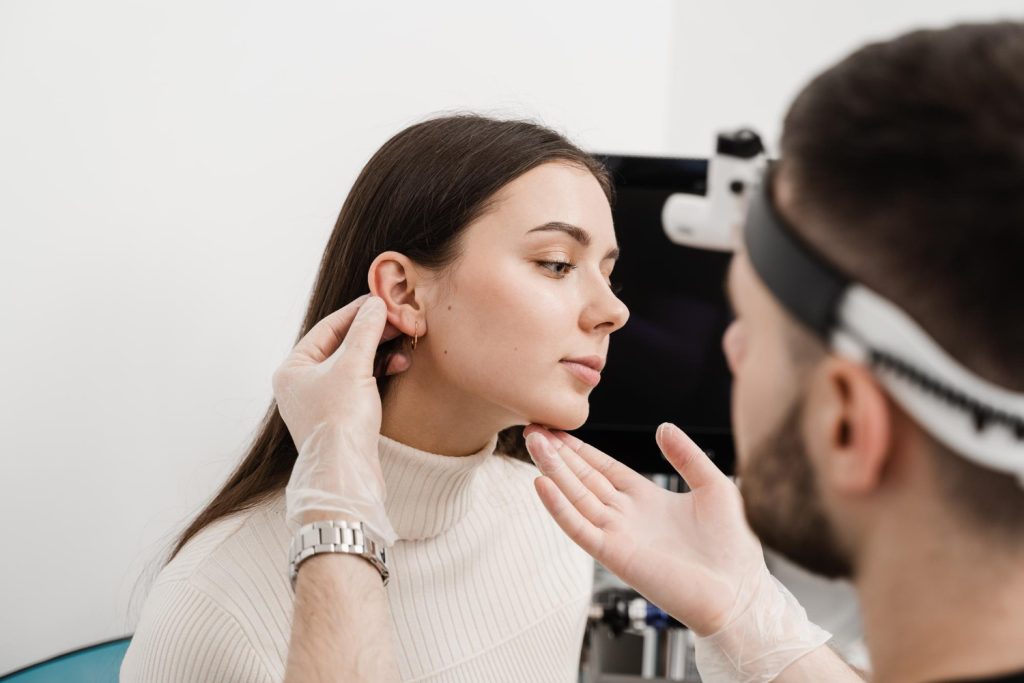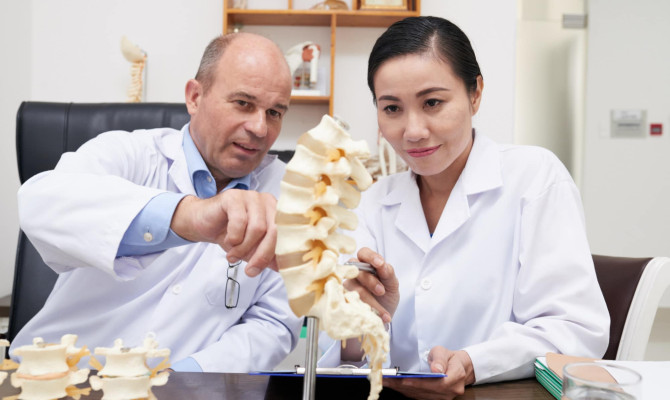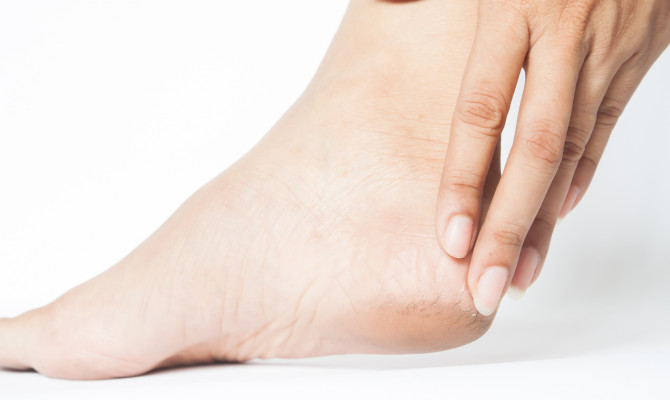Double Ear Infection: Symptoms, Causes & Management

- Ear Infections
- 12 Sep 2023
Introduction
What is a double ear infection?
An infection that develops in both ears at the same time is known as a bilateral or double ear infection. This usually affect the middle ear, a tiny, air-filled chamber behind the ear drum. Bilateral acute otitis media is the most frequent infection, characterized by swelling and fluid accumulation in both middle ears. We will look at this component in this article, illuminating the complex causes, the variety of symptoms they present, and possible treatments. With the help of this in-depth tutorial, you should be able to identify, comprehend, and handle it with ease.

Symptoms
Double ear infection symptoms
- Pain
- Irritability
- Difficulty hearing
- Fever
- Fluid drainage
- Inability to sleep
- Loss of balance
- Behavioral changes
- Loss of appetite
- Difficulty concentrating
- Ear pain or discomfort is one of the hallmark signs of a double ear infection.
- Both ears may experience this ache, which can range in severity from minor to severe.
Irritability
- Especially in babies and young kids who might not be able to properly communicate, their discomfort, fussiness, irritability, or crying can be signs.
Difficulty hearing
- Due to the fluid and inflammation in the middle ear, it may affect hearing.
- There could be a brief loss of hearing or muffled sound.
Fever
- Low-grade fevers are frequently associated with ear infections, especially when the illness is bacterial.
- An increased body temperature can result from the immune system’s reaction.
Drainage of fluids
- Occasionally, clear or yellowish fluid may come out of the ears.
- This might indicate that the ear drum has burst, letting the contaminated fluid escape.
Inability to sleep
- When lying down at night, the pain and discomfort might worsen, making it harder for people—especially kids—to get a good night’s sleep.
Loss of balance
- For one to remain balanced, the inner ear is essential.
- Weakness or lightheadedness may result from infections in this region.
Changes in behavior
- Because of their pain, kids may behave differently, becoming needier or showing less interest in routine activities.
Loss of appetite
- Children may lose appetite since chewing and sucking may worsen the pain.
Difficulty concentrating
- It can be difficult for people of all ages to concentrate on a task or conversation when they have hearing problems brought on by ear infections.
It is crucial to remember that the severity of these symptoms might vary, and they might not all be present in every instance. 2 Symptoms | Researched based study from National Library of Medicine ,3 Symptoms | Researched based study from National Library of Medicine ,4 Symptoms | Researched based study from National Library of Medicine
Types
Types of ear infections
The human ear provides our sense of hearing and balance. However, it can become infected with many things, just like any other body part, which could prevent it from operating normally. The three areas of the ear—the outside, middle, and inner ears—are used to classify ear infections.
Outer ear infection
- Otitis externa, also called swimmer’s ear, is an outer ear infection affecting the ear canal and drum. Most typically, they are brought on by germs that love a wet environment.
- The symptoms include ear pain, redness, itching, and occasional discharge. Exposure to water, using earbuds, hearing aids, or ear canal injuries can all cause these infections.
Infections of the middle ear (otitis media)
- They take place in the area behind the eardrum, in the middle ear. This area is home to the three tiny bones, or ossicles, which transmit sound waves to the inner ear.
- Since children’s Eustachian tubes, which connect the middle ear to the back of the throat, are shorter and more horizontal than those of adults, infections can spread more easily, making them more susceptible to otitis media. Otitis media primarily manifests in two ways:
Acute otitis media
- A sudden infection frequently involving an upper respiratory infection can cause symptoms like fever, earache, irritability in youngsters, and occasionally fluid drainage.
Otitis medium with effusion
- This disorder, commonly called “blue ear,” is characterized by a persistent fluid buildup in the middle ear that is not caused by an acute infection. It may need to be treated if it continues, as it can cause hearing problems.
Understanding what causes middle ear infections
- The middle ear is the main organ affected. The growth of bacteria, viruses, and fluid buildup happens when the Eustachian tube becomes clogged or malfunctions.
- Infection and inflammation may arise from this. Young children are particularly vulnerable because of changes in their Eustachian tubes from an anatomical aspect. 2 Types | Researched based study from National Library of Medicine ,3 Types | Researched based study from National Library of Medicine ,4 Types | Researched based study from National Library of Medicine
Causes
What causes a double ear infection?
- Bacterial infection
- Viral infection
They can result from several things and entail the simultaneous infection of both ears. For effective prevention and treatment, it is essential to comprehend the underlying causes. Their occurrence might be influenced by specific risk factors, and viral and bacterial infections mainly cause them. Let us go into greater detail on these causes:
Bacterial infection
- The Eustachian tubes allow microorganisms, frequently hemophilus influenzae or streptococcus pneumonia, to enter the middle ear.
- These tubes help regulate pressure and drainage because they connect the middle ear to the back of the throat.
- When they are obstructed or fail to function, bacteria have the potential to increase and result in infection.
Viral infections
- Infections, especially respiratory viruses, cause double ear infections, such as the fluke or the common cold.
- These viruses can inflame and expand, preventing appropriate drainage and fostering germs’ growth.
- Bacteria can readily cause secondary infections when immune system defense mechanisms become compromised by viral infections. 1 Causes | Researched based study from National Library of Medicine
Risk factors
Risk factors for double ear infection
Age
- Children are more vulnerable, especially young children. Their shorter and more horizontal Eustachian tubes than those of adults may be partially to blame for this.
- It tends to become less flat as youngsters become older and more vertical.
Allergies
- A person’s allergies, particularly allergic rhinitis, might exacerbate an infection.
- It may result in inflammation of the throat and nasal passages and congestion, impairing normal functioning.
Environmental factors
- Infection risk can be raised by exposure to secondhand smoke, air pollution, and other environmental irritants.
- These elements may cause respiratory tract inflammation, which may impact the ears.
Group setups
- Children who attend daycare services or schools are at an increased risk of contracting diseases due to the increased exposure to bacteria and viruses.
Family history
- Family history may raise a person’s chance of experiencing them further.
Bottle-feeding while lying down
- Breastfeeding babies in a prone position increases the chance of milk or formula seeping into the Eustachian tubes. 2 Risk Factors | Researched based study from National Library of Medicine ,3 Risk Factors | Researched based study from National Library of Medicine ,4 Risk Factors | Researched based study from National Library of Medicine ,1 Risk Factors | Researched based study from National Library of Medicine )
Diagnosis
How is double ear infection diagnosed?
Diagnosing double ear infections involves a combination of physical examination and, in some cases, additional tests to confirm the presence of it and determine its extent. Medical professionals use these methods to identify the condition and provide appropriate treatment accurately.
Physical examination
- A pediatrician or otolaryngologist (a specialist in the ears, nose, and throat) will frequently use specialized instruments to examine the patient’s ears during the physical examination.
- They will search for any apparent anomalies, fluid accumulation behind the ear drums, and indications of inflammation.
Otoscope examination
- A hand-held device called an otoscope has a light and a magnifying length that enable the physician to see the ear drum and canal.
- Bleeding, redness, or swelling behind the ear drum may be signs of an infection.
Pneumatic otoscopy
- With this method, the otoscope is used to alter the ear canal’s pressure gradually.
- An eardrum in good health should move in reaction to pressure variations. Its movement could indicate the presence of fluid beneath the eardrum.
Tympanometry
- This test gauges how the eardrum moves in response to changes in air pressure. It helps determine whether the Eustachian tubes are usually working and whether there is fluid in the middle ear.
- If there is a possibility that the infection is causing hearing loss, an audiometric test may be performed. This test uses a variety of phrases presented at different levels to gauge an individual’s sensitivity to noise.
Testing for cultural and sensitivity
- If the infection is thought to be bacterial, an ear sample may be taken and sent for laboratory examination.
- This makes it easier to pinpoint the precise bacteria causing the gate and choose the best course of antibiotic therapy.
Evaluating symptoms
- The medical professional will ask about each patient’s specific symptoms, such as discomfort, drainage, trouble hearing, fever, and behavioral changes.
Medical history
- A comprehensive assessment of the patient’s medical history aids in identifying any allergies, prior infections, predisposing factors, and other pertinent information that may aid in the diagnosis. 1 Diagnosis | Researched based study from National Library of Medicine
Treatment
Treatment for double ear infection
The multimodal approach aims to manage pain, eradicate the infection, and maintain the best possible ear health. Numerous treatment methods are available, depending on the type of infection, its severity, and the patient’s general health.
Antiviral drugs and antibiotics
- Antibiotics are frequently administered for bacterial ear infections to treat the underlying cause.
- The type of bacteria involved, its age, and known sensitivities all play a role in antibiotic selection. Even if symptoms subside before the antibiotic course is out, finishing the entire treatment term is still crucial.
- Antiviral drugs may be recommended when viral infections result in symptoms related to the ears.
Pain relief techniques
- It may hurt, particularly during the acute stage. Over-the-counter pain relievers, can help control discomfort and lower fever.
- It’s critical to utilize age-appropriate dosages and heed medical advice regarding children.
Surgical interventions, if applicable
- Surgical intervention may be required in some circumstances, mainly if the infection is resistant to medications, if the illness is recurring, or if there is a chance of consequences.
Myringotomy
- The eardrum is lightly perforated to release pressure and drain fluid. The insertion of a tympanostomy tube ensures appropriate drainage and airflow.
- This process is frequently used in kids who have recurrent ear infections.
Tympanoplasty
- A broken or punctured eardrum can be fixed using this. If an infection causes a rupture, it can be required.
Monitoring and follow-up
- Following the start of treatment, it’s critical to keep a close eye on the results and heed any directions given.
- It may be essential to reevaluate the treatment plan if symptoms worsen or don’t improve within the anticipated period of the follow-up session. 5 Treatment | Researched based study from National Library of Medicine ,6 Treatment | Researched based study from Research Gate
Natural Remedies
Natural remedies for double ear infection
Warm compresses
- Pain and inflammation might be lessened, and the afflicted ear can feel warmer by applying a compress.
- After soaking a clean cloth in warm water and wringing out any extra moisture, gently press the fabric on the ear for fifteen to twenty minutes.
Over-the-counter pain reliever
- Acetaminophen and Ibuprofen are over-the-counter pain relievers that can help lower fever and ease discomfort.
Drinking Water
- Maintaining hydration can aid in healing and promote the body’s immunological response. Consume liquids such as clear broths, herbal teas, and water.
Raise your head.
- While sleeping, elevating the head a little bit can assist in releasing pressure and minimizing discomfort.
Garlic oil
- It possesses inherent antimicrobial qualities. The symptoms can be lessened by putting a few drops of heated garlic oil in the afflicted ear. If the eardrum is ruptured, do not use it.
Warm oil drops
- Some people find that putting a few drops of heated mineral or olive oil in their afflicted ear helps. This can ease irritation and help soften ear wax.
Humidifier
- Try keeping the air moist by running the humidifier. 8 Treatment | Researched based study from National Library of Medicine
Complications

Complications & Risks of untreated double ear infection
If left untreated, double ear infections can result in several problems and possible long-term consequences beyond the initial discomfort. Let’s investigate a few of them:
Loss of hearing
- Prolonged accumulation of fluid and inflammation in the middle ear can cause hearing loss that is either transient or irreversible.
- This is especially troubling for young children, whose hearing fluency plays a significant role in language and speech development.
Language and speech development
- Children with recurring or untreated ear infections may develop their speech and language later in life. Hearing loss in a vital situation, even if brief.
- Even a brief hearing loss during a child’s crucial language development stages can make acquiring and using language more difficult.
Recurrent infections
- It makes recurring infections more likely. It may need more intensive care or even surgery if it results in long-term inflammation and structural alterations in the ear.
Ruptured ear drum
- The risk of an eardrum rupture increases if the pressure from the accumulation of fluid increases.
- This has the potential to provide immediate pain relief, but there is also a chance that the infection will spread to surrounding structures.
Issues with coordination and balance
- Particular orientation and balance are intimately related to the inner ear.
- Prolonged ear infections can impair function, resulting in equilibrium, vertigo, and coordination issues.
A Cholesteatoma formation
- It is a benign tumor that can develop in the mastoid bone or middle ear.
- This development can harm nearby structures and cause severe problems if left unchecked.
Impact on quality of life
- Persistent pain, hearing loss, and associated issues can substantially negatively influence the quality of life, resulting in social, emotional, and academic difficulties.
Prevention
Prevention of double ear infection
In particular, maintaining proper hygiene habits can significantly reduce the chance of double ear infections for those more vulnerable, like youngsters.
Hand hygiene
- Hand washing regularly is crucial to stopping the transmission of germs that might cause respiratory infections, which can lead to illnesses.
- Promote handwashing, particularly after using the lavatory and before eating.
Refrain from smoking
- Secondhand smoke exposure can aggravate respiratory tract irritation and raise the risk of illness.
- Avoid smoking in your home, especially while young children are present.
Practice respiratory etiquette
- Use a tissue or your elbow to cover your mouth and nose when you cough or sneeze.
Promote breastfeeding
- Breastfeeding can supply vital antibodies against illnesses, particularly in the early months of life.
Avoid bottle feeding in a supine position.
- Ensure newborns are upright or partially upright when receiving bottle feedings to avoid formula or milk leaking into the Eustachian tube.
Avoid using pacifiers.
- Overuse of pacifiers, particularly in young children, can raise the risk of infection. Consider restricting your child’s use and ensure its cleaned properly.
Regular ear cleaning
- When taking a usual bath, gently wipe the outer regions of the ears with a washcloth. Nothing should be inserted into the canal as this could drive water deeper and cause injury. 7 Prevention | Researched based study from Science Direct
FAQs
Double ear infection-Frequently Asked Questions
Is it normal to hear double with an ear infection?
- Being able to hear twice or experiencing distorted hearing is not a common sign of a routine ear infection.
- Hearing double, or diplopia or double hearing, is more frequently linked to problems with visual symptoms or specific neurological diseases.
Can an ear infection recover itself?
- Certain mild infections, particularly those with minimal symptoms, may clear up independently without needing medical attention.
- This is more likely to occur in adults and older kids. It’s crucial to remember that not all infections will go away independently and that complications may arise if a condition is not treated.
How long does a double ear infection last?
- It can change based on several variables. In a few days, the bacterial ear infection may get better.
- Ear infections that last for weeks or even months. Most viral ear infections go away independently for several days to a week.
Any feedback on this article?
 This Articles content was accurate
This Articles content was accurate Very Informative Article
Very Informative Article I have a question or a comment
I have a question or a comment
 This article contains inaccurate content
This article contains inaccurate content This article was not helpful
This article was not helpful I have a question or a comment
I have a question or a comment
We appreciate your helpful feedback!
Checkout our social pages
References
-
National Library of Medicine
Causes | Risk Factors | Diagnosis
-
National Library of Medicine
Symptoms | Types | Risk Factors
-
National Library of Medicine
Symptoms | Types | Risk Factors
-
National Library of Medicine
Symptoms | Types | Risk Factors
-
National Library of Medicine
Treatment
-
Research Gate
Treatment
-
Science Direct
Prevention
-
National Library of Medicine
Treatment | Natural Remedies





































